How to measure customer satisfaction: Methods, metrics, and more

Customer Support Manager - Tier 1
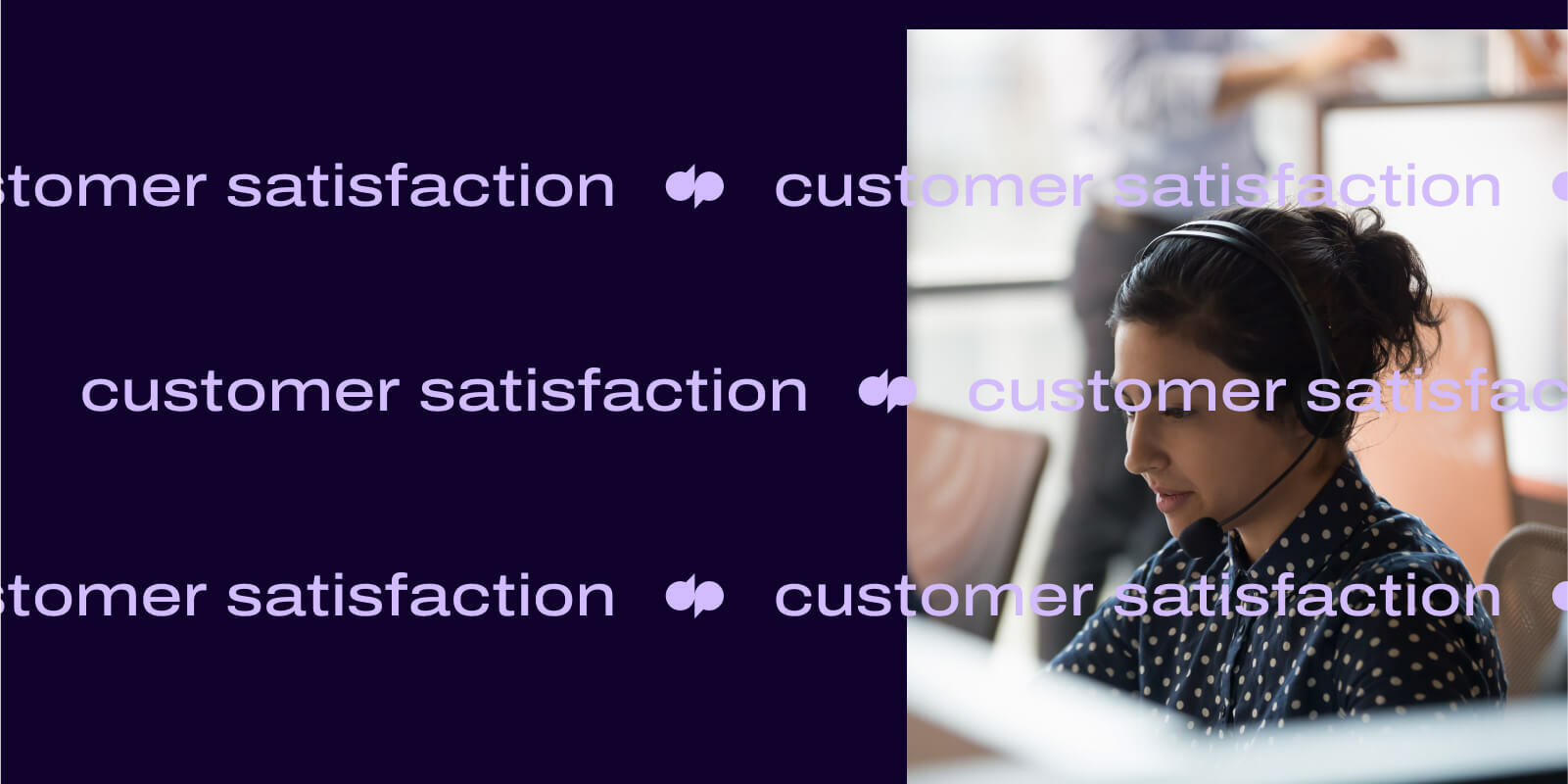
Tags
Share
How do you know your customers are happy with your brand, product, or service? If you don’t actively measure customer satisfaction levels, your answer is probably something like: “Well, they didn’t call to complain. So, surely that means they’re satisfied, right?”
Wrong.
Most unsatisfied customers won’t contact you to complain—they’ll just leave. But even though they won’t complain directly to your company, you can bet that they’ll share their dissatisfaction with their friends, family, and colleagues.
Measuring customer satisfaction at scale mitigates this issue. But how do you do it?
We’re going to show you how to generate a customer satisfaction score (CSAT) for all your customer interactions. Then, we’ll discuss how CSAT and other metrics unlock data-driven insights that you can use to improve customer experiences and drive loyalty.
What is customer satisfaction?
Customer satisfaction measures how happy your customers are with your brand, product, or service. Essentially, it determines whether you meet, exceed, or fall short of customer expectations.
There are a bunch of customer satisfaction metrics that you can use to gauge this at scale. Before we get into some of these, it’s worth discussing in a little more depth why measuring customer satisfaction is so crucial.
Why is it important to measure customer satisfaction?
Knowing how happy your customers are is valuable. But measuring customer satisfaction goes beyond collecting simple, quantitative feedback.
It can highlight critical business failings, uncover hidden pain points, and illuminate opportunities for growth. Without these insights, you risk losing valuable customers and missing out on lucrative opportunities.
Through CSAT scores and other key performance indicators, you can measure customer satisfaction to:
Identify and address customer pain points
Evaluate customer relationships
Inspire product development and process improvements
Control customer churn
Boost customer loyalty and retention.
How to measure customer satisfaction with CSAT surveys and scores
To obtain customer satisfaction scores, you typically need to create a CSAT survey.
A CSAT survey asks customers the all-important question: “How satisfied were you with your customer service experience?”. Customers rate their experience on a scale of 1-5, with 1 being extremely unsatisfied and 5 being extremely satisfied.
Calculating your CSAT score is a piece of cake. All you need to do is divide the total number of satisfied customers (i.e, those who scored 4 or 5) by the total number of responses. Multiply that number by zero and boom—you have a CSAT score.

If your CSAT score is below 75%, take that as your cue to identify and address weak areas in your customer journey. If it’s above 75%, well done—you’re doing a good job of satisfying your customers.
It sounds simple, doesn’t it? Well, CSAT scores are the best way to measure customer satisfaction, but they are also notoriously difficult to collect.
We’ve found that, on average, 95% of customers don’t bother responding to CSAT survey requests. The 5% who do are generally those who’ve had exceptionally negative or overwhelmingly positive experiences. So, it’s not really an accurate representation of how satisfied your customer base is as a whole.
That’s why companies need to use the right tools to measure customer satisfaction. Introducing: Dialpad’s AI CSAT.
AI CSAT can automatically infer accurate CSAT scores for 100% of your customer calls. Using our homegrown transcription technology, you can not only access real-time transcripts of customer calls and perform sentiment analysis, you can also get CSAT scores—without needing to pester your customers for feedback:
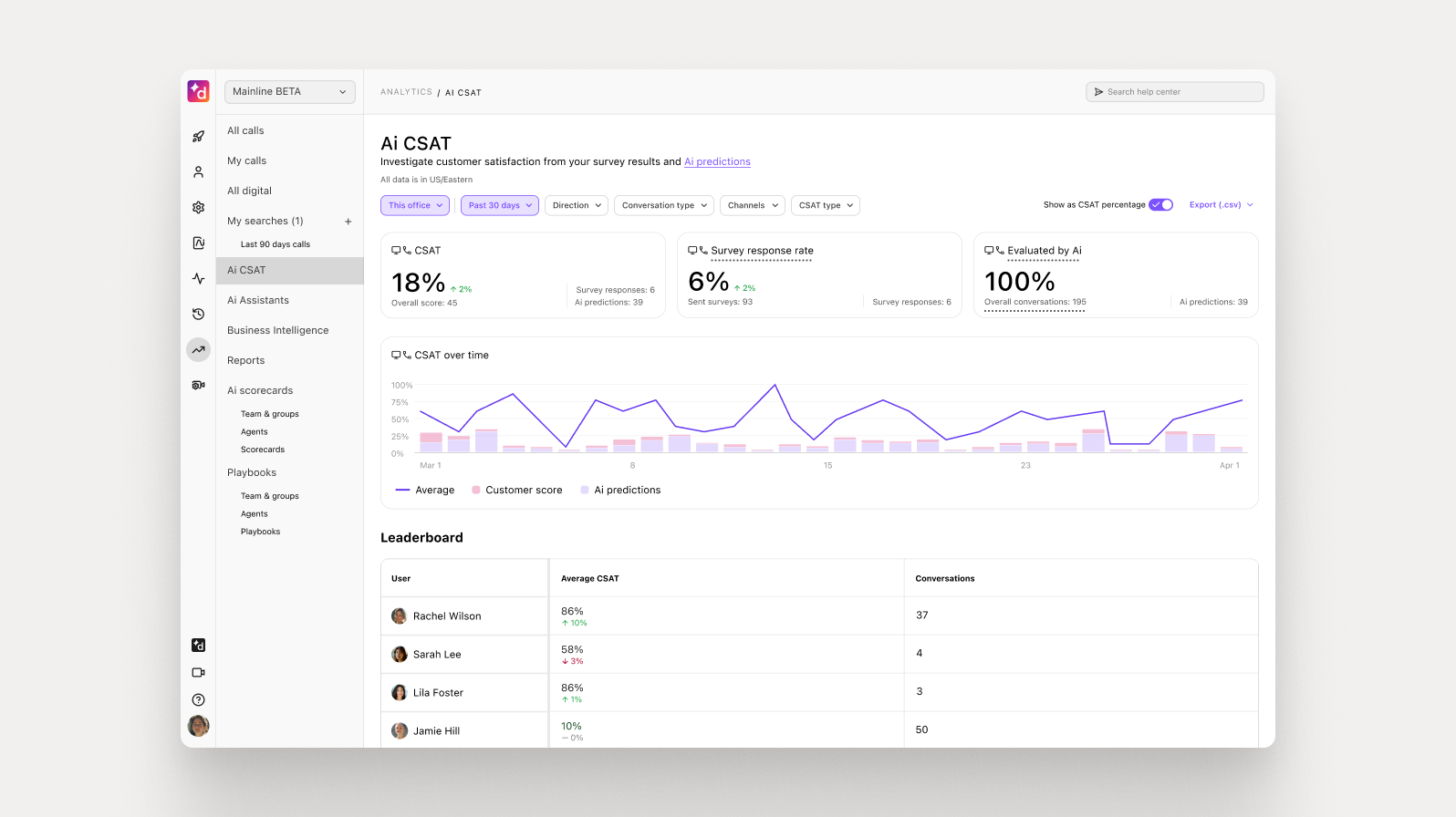
Other useful metrics to measure customer satisfaction
There are a few other customer engagement metrics and KPIs to measure customer satisfaction in more depth. Three of the best methods used to measure customer satisfaction involve Net Promoter Scores, Customer Effort Scores, and Service Level Agreements:
Net Promoter Score (NPS)
Net Promoter Scores (NPS) are a popular customer satisfaction measurement. Specifically, it measures the likelihood of your customers recommending your brand to others.
An NPS survey asks: “On a scale from zero to 10, how likely are you to recommend our brand?”.
NPS uses a scale to measure customer satisfaction. Scores range from -100 to 100, depending on your customers’ ratings. You can calculate your NPS using this simple formula:
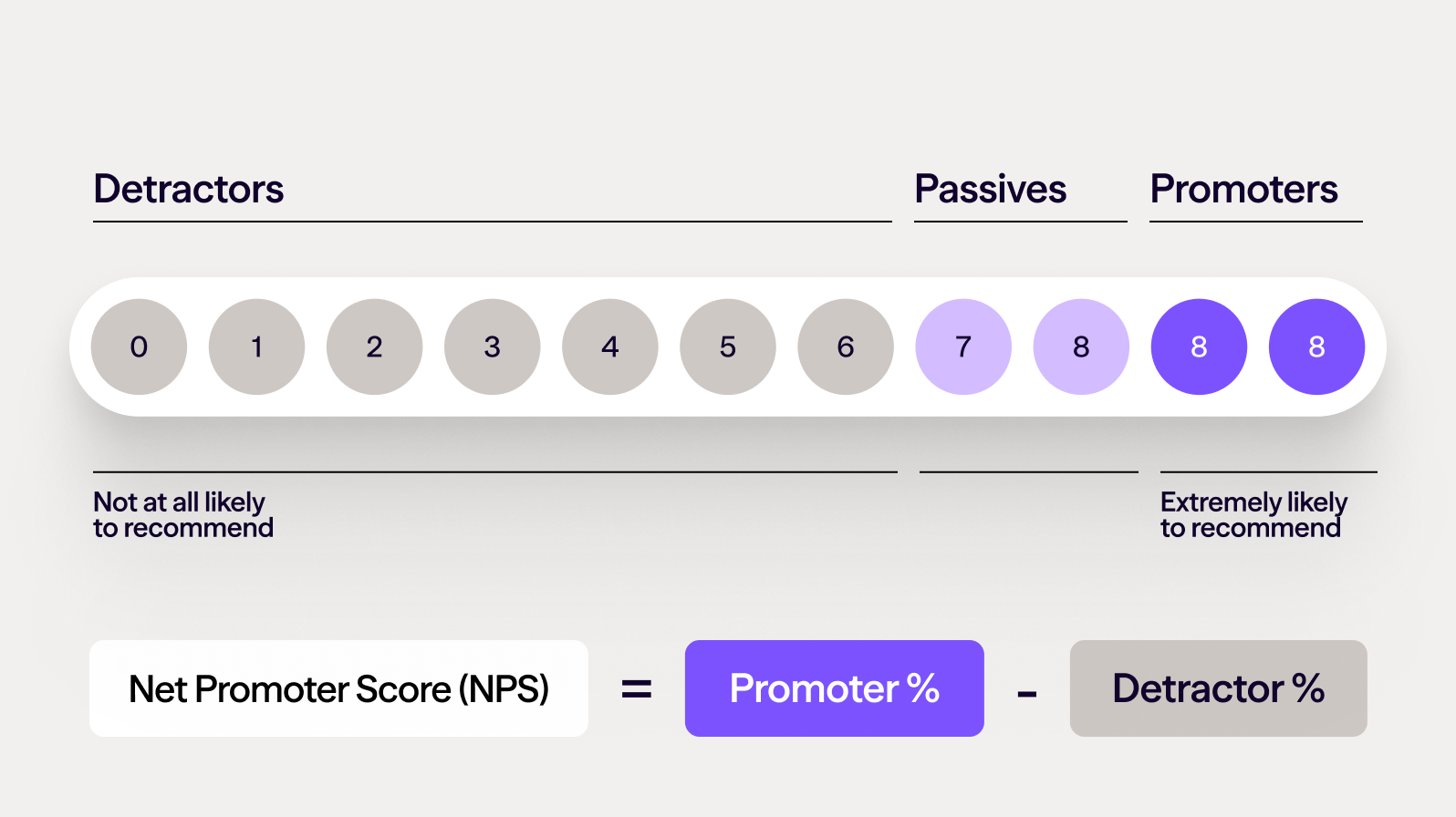
Customers trust personal recommendations from friends and family more than any other advertising. So, a good NPS will generate more high-quality leads.
Customer Effort Score (CES)
Customer Effort Score (CES) is a metric that reflects how much effort your customer has to put in to complete a desired action. After your customer has interacted with your company, you can send them a CES survey and use this formula to measure your CES:
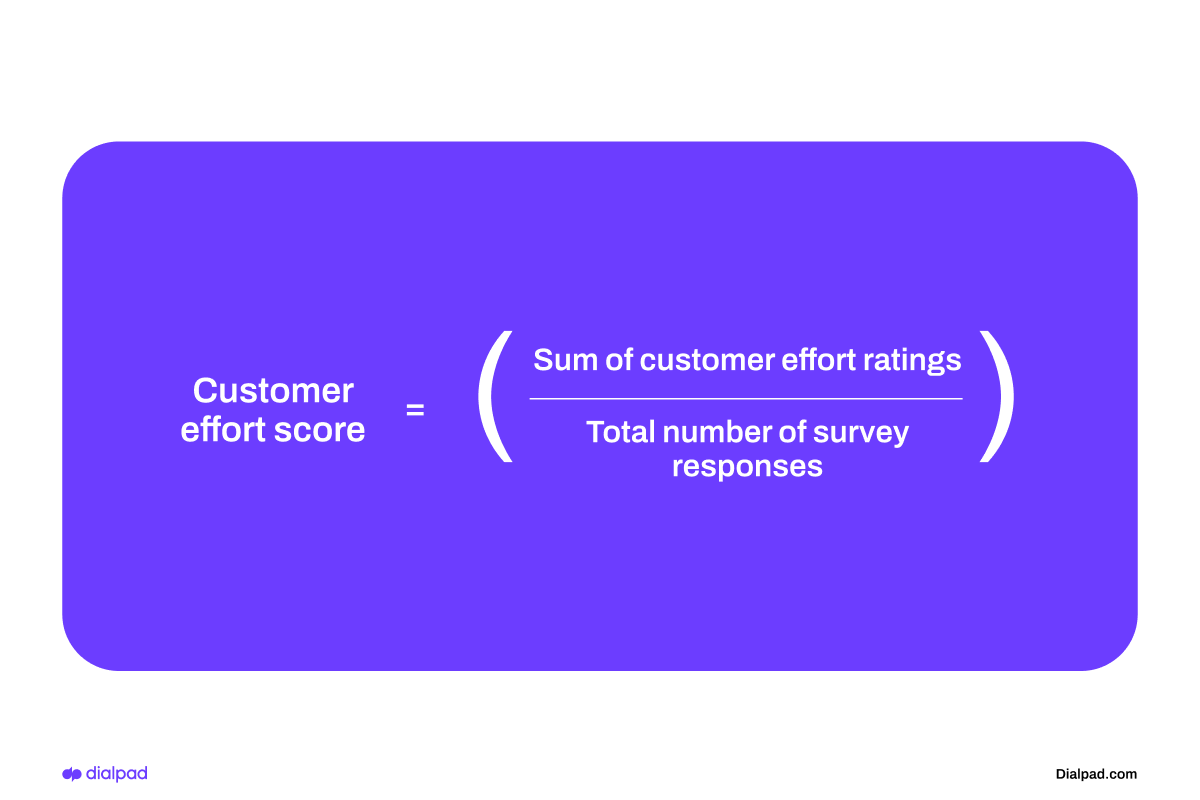
The lower, the better. Let’s say your customer wants to get a refund. You'll receive a high CES if they have to jump through hoops to get one. But, if it’s a smooth, painless process, you’ll receive a low one.
Easier experiences = happier customers. Keep your CES low by identifying and addressing pain points in your customer journey.
Service Level Agreements (SLAs)
Service Level Agreements (SLAs) define the availability of your customer service team or other agreed-upon elements of the service you’ve promised to a customer or client. So, measuring your SLA adherence should be a top priority.
Metrics like missed calls and average speed of answer (ASA) can help you determine your customer service availability and ensure you hit targets.
Dialpad can track these metrics for you. We’ll also send your supervisors real-time service-level alerts to notify them should customer calls go unanswered or be kept in queues for long periods:
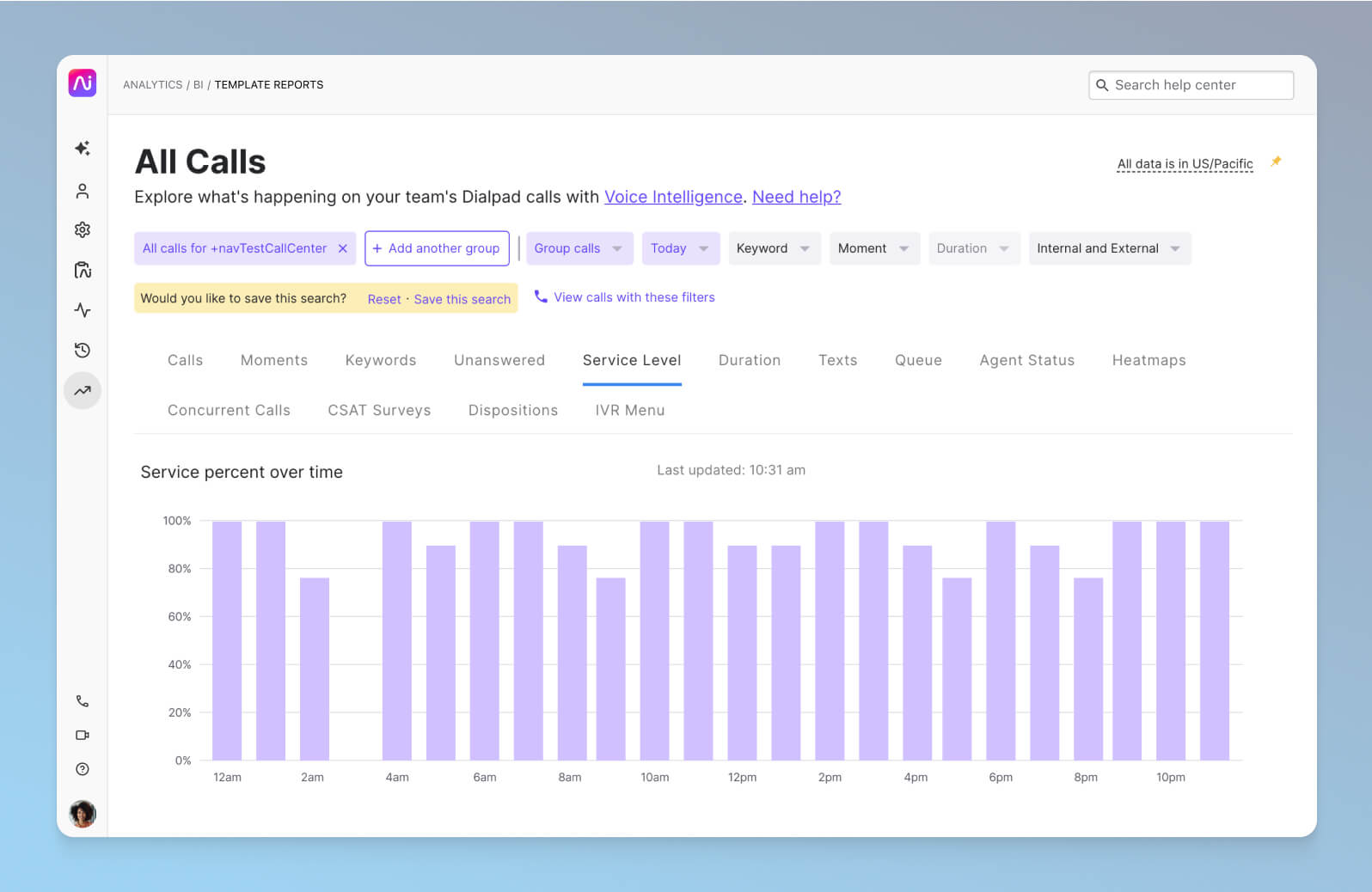
Mistakes to avoid when measuring customer satisfaction
So, now you know some of the different ways to measure customer satisfaction. But to effectively track where you are with customers, you should avoid making some of these common mistakes:
Ignoring negative CSAT scores
Receiving a negative CSAT score is disheartening, but there’s just as much value in negative feedback as in positive.
In fact, negative feedback can offer even more insight into driving business improvement and nurturing customer loyalty.
Reach out to customers who give low CSAT scores and ask them where you went wrong. Use their feedback to target specific customer pain points and drive improvements in critical business areas.
Once you’ve made these improvements, let your customers know! Send them an email or write a social post detailing how their feedback has inspired you to improve your service.
Customers respect businesses who listen and respond to feedback, so taking their opinions on board can help you win their loyalty.
Forgetting to include open-ended questions
Closed-ended questions (like asking customers to rate their satisfaction levels out of 10) only deliver what’s known as quantitative feedback. This is valuable, but it doesn’t give you the whole picture.
Open-ended questions, like asking why a customer is satisfied with their service, provide qualitative feedback. This is much more actionable as it can help you pinpoint exactly what you’re doing well and where to improve.
Using the CSAT survey feature in Dialpad’s cloud contact centre solution, you can create surveys that ask customers open-ended questions straight after they’ve given you a CSAT score:

Creating these surveys only takes a couple of minutes. So, you can get the “what” and the “why” in no time.
And on top of that, Dialpad AI also transcribes calls in real time for you. So, even if a customer doesn’t complete your survey, you can search their transcripts to gather qualitative feedback:
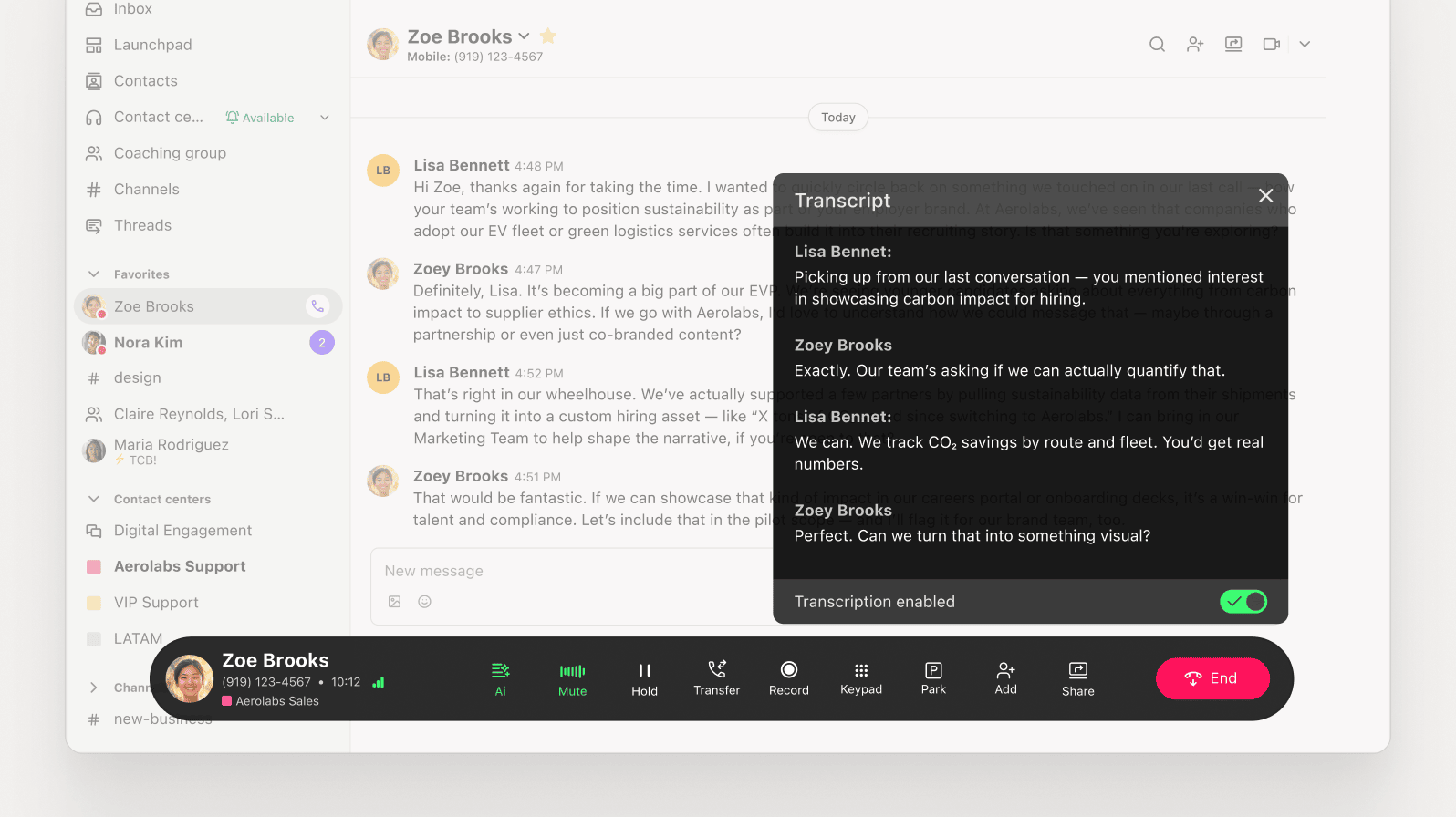
Failing to communicate customer satisfaction feedback to other teams
Customer feedback should be communicated beyond your Customer Service team. From product production to marketing, feedback can be used to improve your customer experience and drive revenue-generating insights.
Let’s say a particular segment of your customers call to ask whether your product has a specific feature. Communicating this need to your Product team can help them target product development in that area to meet customer demands.
Once it’s been implemented, your Marketing team can create segmented campaigns to promote this feature to the right audience.
For painless cross-team communications, look for a unified communications solution with phone calls, video, instant team messaging, and SMS. This way, you can quickly deliver customer insights to different teams.
Dialpad, for example, has a team messaging feature where you can hop on with other team members to quickly discuss insights. If you want a more in-depth conversation, you can seamlessly set up a video meeting. And if you just want to clarify a simple point, you can send an instant message.
This can all be completed within one centralised, intuitive app for seamless communications—no need to switch between platforms or remember different log-ins.
Measure customer satisfaction as a step towards greater customer loyalty
Using customer satisfaction scores to determine how happy your customers are is a significant first step. But to maximise the value of CSAT, you need to use your insights to drive strategic improvements—specifically, ones that nurture customer loyalty.
Measure customer satisfaction to highlight and address problem areas and pain points. When you take the time to listen to and act on customer feedback, you not only directly improve customer experiences, but you win the respect and loyalty of your customers.
As a result, you can improve your bottom line and attain sustainable business growth.
Ready to make the most out of CSAT? See how agents and supervisors generate accurate CSAT scores for every customer interaction using Dialpad’s AI contact centre solution.
Want an easier way to measure customer satisfaction?
Book a walkthrough of Dialpad AI Contact Centre with our team, or take a self-guided interactive tour of the app first!
